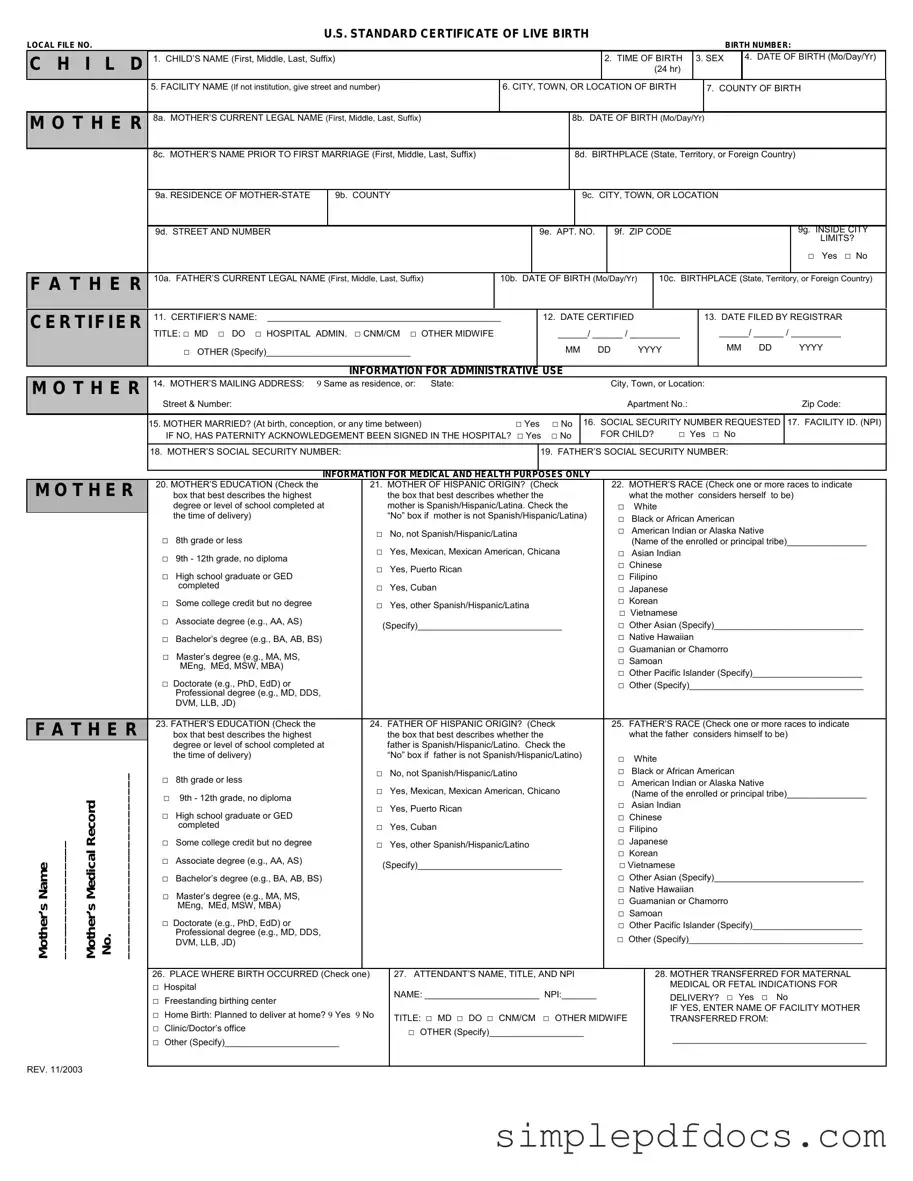The CDC U.S. Standard Certificate of Live Birth form serves as a crucial document in the vital statistics system, capturing essential information about newborns in the United States. This form is designed to record details such as the child's name, date of birth, and place of birth, which are fundamental for identity verification and legal purposes. Additionally, it includes information about the parents, including their names, addresses, and marital status, which helps establish familial relationships and lineage. The form also collects data on the mother's health during pregnancy, the type of delivery, and any complications that may have arisen, contributing to public health statistics and research. By standardizing the information collected, the CDC aims to ensure consistency across states, thereby facilitating accurate tracking of birth trends and health outcomes. Understanding the components of this form is essential for parents, healthcare providers, and policymakers alike, as it plays a vital role in both individual and public health contexts.
